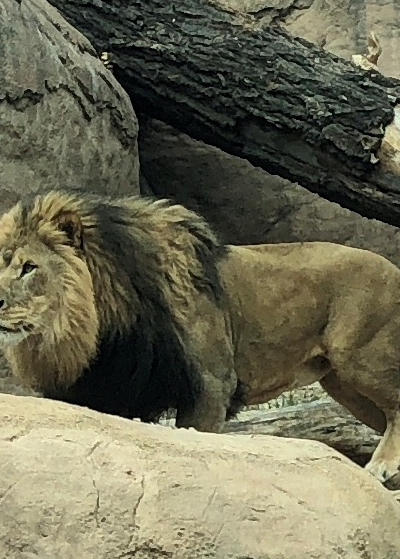 In the wild, animals spend a lot of time and energy foraging or hunting for food. Feeding our animals seems like a pretty fundamental task of animal care, but it’s more complicated than one might think. Just like our partners at Children’s Hospital Colorado talk about foods that can have calming effects for kids, we work to present our animals’ special diets in ways that nourish their bodies and support their natural instincts.
In the wild, animals spend a lot of time and energy foraging or hunting for food. Feeding our animals seems like a pretty fundamental task of animal care, but it’s more complicated than one might think. Just like our partners at Children’s Hospital Colorado talk about foods that can have calming effects for kids, we work to present our animals’ special diets in ways that nourish their bodies and support their natural instincts.
Wild animals have to solve problems and exert physical energy to feed themselves, which is good for their physical fitness and their mental well-being. Here at the Zoo, we provide opportunities for our animals to fulfill their instinctive hunting or foraging behaviors by hanging food high, or burying it, or placing it in a puzzle feeder that requires focus and dexterity to reach.
“We work hard to create environments and provide daily activities that enrich our animals’ lives, but some people might not immediately recognize that their meals are another opportunity for enrichment,” said Rachael Hahn, lead keeper in African Rift Valley. “I get to work with one of the most iconic hunting species out there: African lions. In the wild and in human care, African lions typically sleep 20 to 22 hours a day, but when they’re active, they’re certainly making up for lost time. They’re unbelievably smart, incredibly strong and as confident as they come.”

Hahn and her team in African Rift Valley make meal time mentally and physically stimulating for Abuto, the 10-year-old pride patriarch; Lomela, 14-year-old matriarch; Elsa, their 6-year-old daughter; and Boma and Aslan, their 6-year-old sons. In addition to scattering food throughout their large yard, the team hangs big pieces of meat up high in a tree for our African lions, so they have to climb up and drag it down, like they would do with some prey in the wild.
“We have been doing this for a couple of years where guests can see it, and the lions seem to really enjoy working for their rewards,” said Hahn. “We also put meat inside some of their giant plastic boomer balls, and have seen the lions ‘playing’ more often, even when food isn’t involved. I’ve seen Lomela, who’s nearly 15, playing with toys like she’s a kitten again. Since making this addition to their routine, we’ve seen them exhibiting calmer behaviors at other times of the day, which is a great indication that they’re mentally fulfilled thanks to these additional opportunities to solve problems.”
Water’s Edge: Africa keepers provide meal-driven enrichment opportunities for the high-energy, intelligent residents of Lemur Island, too. The ring-tailed lemurs at CMZoo get the chance to frequently dine-and-dash, because their meals encourage them to, and the family’s diets are rarely presented in the same way.

“Lemurs are one of few primate species that forage from the ground, up high in the trees, and everywhere in between,” said Al Carrier, Water’s Edge: Africa keeper. “They’re super smart, so we get creative finding new places to stash their food. It’s kind of like an Easter egg hunt every time we place their meals on Lemur Island for them, and it’s fun to watch them scurry and leap around, finding their delicious rewards.”
Keepers also use puzzle feeders that the lemurs can use their long fingers and impressive fine motor skills to retrieve food from. They hang food in spheres that require the lemurs to stretch, climb and leap to reach. They also get seasonal delicacies, like browse.
“In the wild, lemurs eat tree leaves and buds, so we provide that as often as possible for our lemurs,” said Carrier. “We bring in fresh browse – otherwise known as tree branches – from our community and sometimes from our shipping container farm, here at the Zoo. They love to search for the buds on those branches in the spring because they make a nice sweet treat.”

